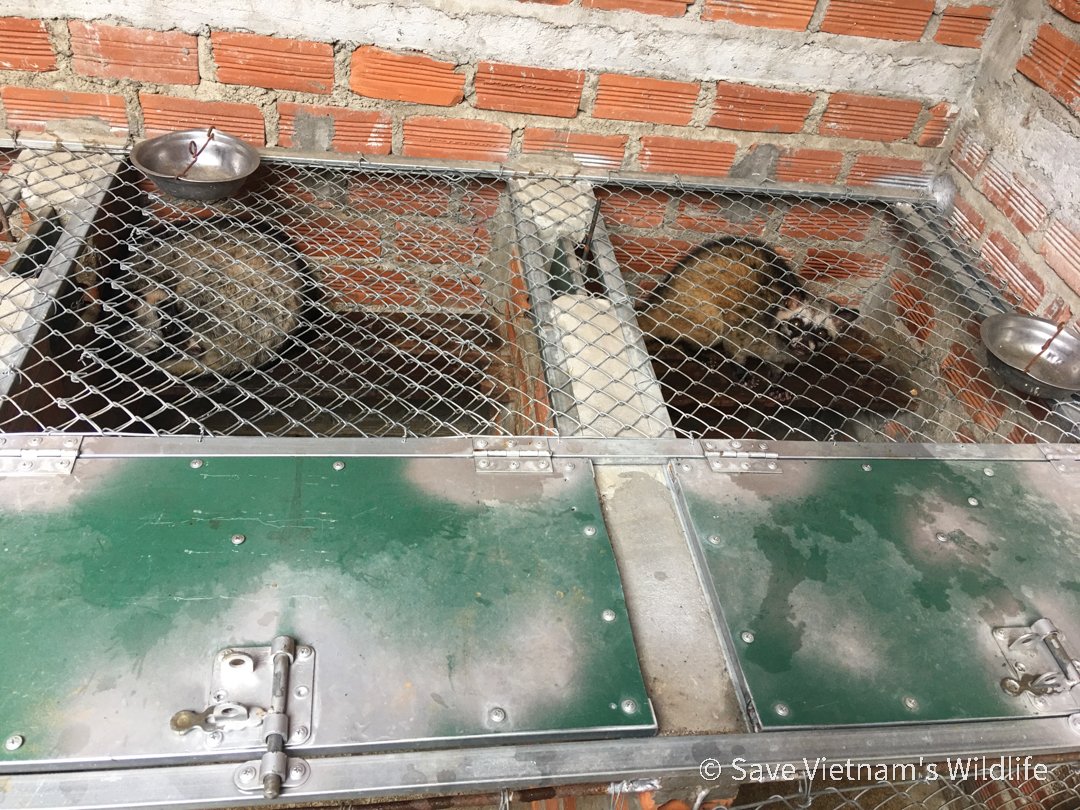
The trade in small carnivores: a threat to public health and to species conservation
A global issue
Small carnivores are traded for their meat and other body parts, for their fur, and as pets. The trade is global in its impacts and it affects a wide range of species, including humans: zoonotic diseases, such as SARS and Covid-19, have been detected in small carnivores.
The small carnivore trade is diverse and includes:
Bushmeat
Small carnivores form part of the bushmeat trade, which is common across Africa. Although often consumed for subsistence, there is also a large commercial element to the bushmeat trade.
Wild meat farms
Various civet species are commonly kept in wild meat farms. Animals are often kept in high densities and in unsanitary conditions: ideal conditions for pathogen spillover.
Live trade
Live small carnivores are traded in large volumes, particularly in Asia. Most of this trade is to supply demand for wild meat and for re-stocking wildlife farms. Many of the small carnivores in the live trade are from the wild.

The trade threatens wild small carnivores
Illegal hunting
In countries where there is high demand for wildlife, people illegally hunt small carnivores, often inside protected areas. A common method in parts of Asia is to use snares; this a devastatingly effective hunting method.
Much of the hunting in Asia is driven by urban demand for wild meat, which is eaten as a luxury.
Image: Cable snare hunting traps confiscated in Pu Mat National Park, Vietnam.
Legal trade
In contrast to hunting inside protected areas, the trade or the consumption of small carnivores is often legal. In many countries it is also legal to farm, keep or trade small carnivores for commercial purposes.
Inadequate laws, weak governance, and poor enforcement means that many traders still source from wild populations. Additionally many wild meat consumers prefer wild-sourced to captive-sourced small carnivores.
Image: A civet on a spit in Hanoi, Vietnam.
What needs to change?
We will continue to put ourselves at risk from zoonotic diseases and wild populations of small carnivore will continue to decline, unless we:
Phase out the sale of live and freshly killled small carnivores in urban markets
End the commercial farming of small carnivores in captivity
Update any relevant national laws, policies and regulations so that these operate under a “One Health” approach
Reduce urban consumer demand for wild meat and for animal fur
Produce alternative sources of protein where there is a genuine subsistence need for wild meat
Have stronger anti-snaring legislation that includes criminalising the possession of snaring material inside protected areas
Image: A Masked Palm Civet for sale in a market in Lao PDR
Useful Resources
The wild meat trade increases disease risk
Nguyen Quynh Huong et al. 2020. Coronavirus testing indicates transmission risk increases along wildlife supply chains for human consumption in Viet Nam, 2013-2014.
Civets in the wildlife trade carry high-risk viruses
Wan-Ting He et al. 2022. Virome characterization of game animals in China reveals a spectrum of emerging pathogens.
Covid-19 (SARS-CoV-2) in farmed mink
Sharun, K. et al. 2021. SARS-CoV-2 infection in farmed minks, associated zoonotic concerns, and importance of the One Health approach during the ongoing COVID-19 pandemic.
SARS and H5N1 (bird flu) in civets
Y. Guan et al. 2003. Isolation and characterization of viruses related to the SARS coronavirus from animals in Southern China.
Roberton, S. et al. 2006. Avian influenza H5N1 in viverrids: implications for wildlife health and conservation.







